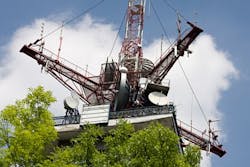ARINC supercomputers help design and model the performance of complex aviation antennas
ANNAPOLIS, Md., 12 Feb. 2012.Radio communications experts at ARINC Inc. in Annapolis, Md., are using supercomputers to help systems integrators design and analyze the performance of complex antennas. The ARINC Advanced Systems Engineering and Integration Division has installed a Linux-based supercomputer to support engineering analyses for ARINC’s external customers. The company’s previous supercomputer also remains available.
The Linux supercomputer is a multiprocessor cluster, consisting of 14 compute nodes, each with several high-speed multi-core processors, as well as 448 gigabytes of available memory. A high-speed local area network connects nodes on the supercomputer, which is designed to solve computationally large problems such as complex antenna engineering and analysis.
The high-performance computing (HPC) facility can help engineers save time and money by modeling and simulating the real-world performance of antennas and electromagnetic systems, instead of constructing prototypes and making measurements on physical systems, ARINC officials say. Computer-based performance modeling can help optimize the design of antennas and their mounting locations early in the design process.
The supercomputer can implement ARINC’s analytical toolset, including the Geometric Theory of Diffraction and the more broadly applicable Method of Moments, Physical Optics, and Finite Element methods, which can help increase the size of the objects that can be modeled and the frequencies at which they can be analyzed.
“This arrangement allows parallel processing of large problems such as calculating radar cross-sections, or finding the radiation patterns of antennas mounted on large aircraft and ships,” says Jim Potter, ARINC's director, system engineering and analysis.
ARINC’s supercomputer facility has performed advanced modeling and analysis of antennas, communications, and navigation systems since the 1990s, ARINC officials say. The company also has developed proprietary software for demanding analysis and modeling of large systems for commercial, government, and military applications.
For more information contact ARINC online at www.arinc.com.
